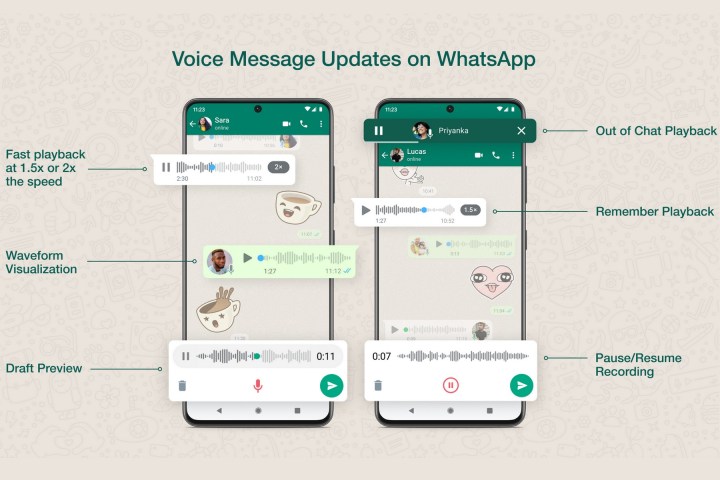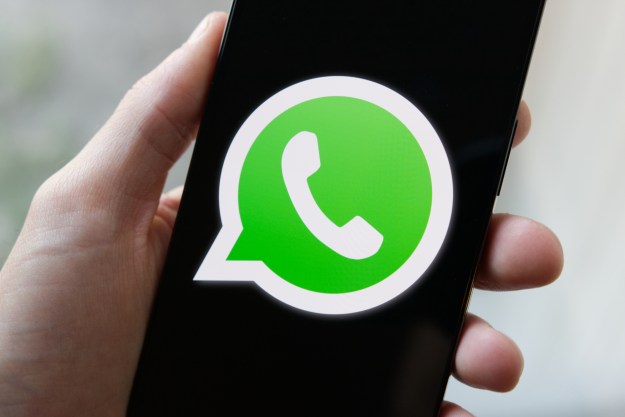WhatsApp is finally giving a much-needed overhaul to the voice messages system on its messaging platform, with a grab bag of new features that will start rolling out in the coming weeks. Let’s start with the trick that users have been demanding for years — fast playback for audio clips. WhatsApp will soon let users speed things up with controls for 1.5x and 2x voice message playback for both originally recorded and forwarded clips.
Another neat addition is background playback. WhatsApp users can leave a chat window and navigate other sections of the app or even jump into another chat while the voice message plays in the background. And if there are multiple audio clips lined up in succession, all of them will play in a queue while still in the background.
Next in line is the ability to pause and resume while recording a message, which is a feature that should have been there from the get-go. The idea is simple — you can now take a small pause to collect your thoughts or just wait for an audible distraction to pass in order to record your message in peace. And as a neat aesthetic touch, voice messages will soon be visualized as a waveform with a green marker to show playback progress on the timeline.

Voice message preview is also finally coming to all WhatsApp users. You can now listen to a preview of your audio clip before hitting the send button. For folks who rely on voice notes frequently, this one is a godsend. WhatsApp is also adding the ability to remember playback progress. If users hit the pause button while listening to an audio clip, playback will resume from the same point when they return to the original chat.
What else is in the pipeline?
Last week, a lucky few beta testers started receiving message reactions on WhatsApp. In the initial phase, WhatsApp is only offering a selection of six quick emotions including like, laugh, love, surprised, sad, and thanks. The situation around message reactions has spawned a whole debate on the iMessage experience across iPhones and Androids, but things are finally changing. Google has also enabled similar reactions in its RCS-loving Messages app, and it’s encouraging to see WhatsApp following in its footsteps.
WhatsApp is also testing the ability to send files up to 2GB in size, up from the measly 100MB limit that it currently imposes on sharing media content. Rival platform Telegram already allows users to share files of up to 2GB, which is far ahead of what iMessage and Facebook’s Messenger allow. A sticker tab is also being tested, which allows users to mark a sticker as a favorite and access it across both mobile and desktop.
As WhatsApp continues the development of new features, there is another huge worry looming over its head. Last week, Europe voted in favor of the Digital Markets Act, which aims to rein in platforms that serve as gatekeepers. Going by its market capitalization, WhatsApp falls under the gatekeeper category, and as per the proposal, it will have to allow interoperability. Simply put, a Messenger user can get his text landed in another person’s WhatsApp inbox. However, security experts have warned it can’t be done without compromising the inherent encryption safeguards.
Editors' Recommendations
- Meta’s ChatGPT killer is taking over your favorite apps
- Are WhatsApp and Facebook down? Here’s what you need to know
- How to know if someone blocked you on WhatsApp
- Is Temu legit? Everything you need to know about the shopping app
- The T-Mobile Tuesdays app is about to get a big upgrade




